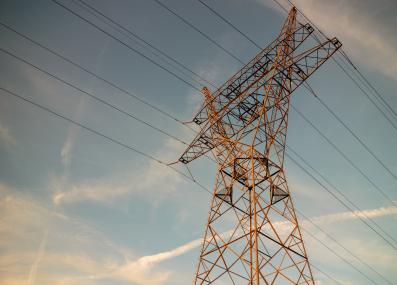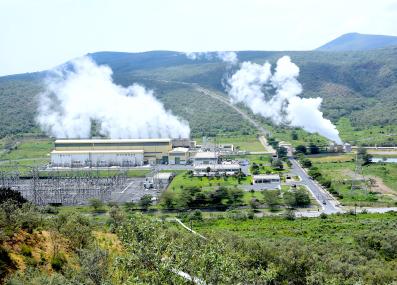New to climate change?
Heating and Cooling
From burning wood or natural gas in a furnace to window air conditioning units, we heat and cool our homes, schools, and offices in a number of ways. But keeping our buildings a comfortable temperature uses a lot of energy: almost 25% of the energy produced worldwide is used to heat and cool homes and commercial buildings.1
At the same time, many people—especially low-income people, and especially in developing countries—lack adequate heating or air conditioning, which can have serious health consequences during cold spells and heatwaves. As incomes rise and our planet warms, the number of air conditioning units is expected to triple from 1.6 billion units today to 4.8 billion in 2050.2 The question is how to pivot to affordable, lower-carbon ways to cool and heat our buildings.
Climate impact of heating and cooling
Homes and buildings in higher-income countries typically have a heating system, like a boiler (which distributes water or steam through radiators), a furnace (which sends warm air around your house using ducts), electric space heaters, electric heat pumps (which pull heat from surrounding air), or passive or active solar heating (which uses heat from the sun). Most of these systems burn fossil fuels or require electricity (which itself is generated from a mix of fossil fuels and low-carbon energy). In fact, just under half of heating systems sold around the world in 2020 run directly on fossil fuels, such as oil, natural gas, and propane, which is derived from oil and natural gas refining.3 Burning these fuels releases carbon dioxide and other greenhouse gas emissions, while heating with wood stoves — as many people in the developing world do —releases greenhouse gases along with harmful indoor and outdoor air pollution.
There are many methods that people around the world use to stay cool indoors, like using fans and opening the windows at night and closing the shades during the day. More and more people around the world are turning to air conditioning (AC) units to cool their homes and buildings—especially in the U.S., home to 40% of all air conditioners.4 AC units work like refrigerators: warm air from inside is pushed through a vent or window AC unit, where it passes over a coil filled with chemicals called “refrigerants” that absorb heat. The cooled air gets sent back into the house, while its heat is released outside. Not only does this process use a lot of electricity, but AC units also tend to leak refrigerants, which are often hydrofluorocarbons: greenhouse gases that are hundreds of times stronger than carbon dioxide.
Lowering the climate impact
To lower the climate impact of buildings, we can design homes and businesses that use less energy to begin with. This concept isn’t new—to give just one example, for thousands of years Native Americans built dwellings made from clay and straw that stayed cool in the summer5—but today it’s being incorporated with modern technology. “Passive houses” can use up to 80% less energy for heating and cooling through measures like airtight windows, insulation, using heat-absorbing building materials like concrete, and carefully thinking through how buildings are shaded and oriented.6 In warmer climates and cities, making roofs out of reflective materials or painting them white can lower the need for air conditioning.7 Existing buildings can also be renovated to use less energy by adding insulation and installing energy-efficient windows and doors.
Along with getting smarter about our building design, we can switch to lower-carbon ways to heat and cool our buildings. Heat pumps, which move heat from the environment to inside buildings, are significantly more efficient than other kinds of electric heating—plus, they double as air conditioners during the warmer months by moving hot air outside.8 Because soil temperatures stay relatively constant year-round, "ground source" or "geothermal" heat pumps that draw their heat from underground can be especially efficient ways to heat and cool homes.8 If these electric heating and cooling systems are powered by a clean electric grid, they have roughly a quarter the emissions of a natural gas furnace.9
There are other measures we can take now to reduce the climate impact of air conditioners. More than 160 countries have agreed to phase out the use of hydrofluorocarbons as refrigerants—a measure that scientists estimate will lower global warming by almost 1 degree Fahrenheit.10 Also, setting stricter energy efficiency standards for air conditioners could reduce emissions, lower energy costs, and encourage investment in cleaner cooling systems.4
Updated August 1, 2025.
1 International Energy Agency: "Global Status Report for Buildings and Construction 2019." This report finds that residential and commercial buildings accounted for 30% of global energy use, and 28% of global greenhouse gas emissions from energy and industrial use, in 2018. Around four-fifths of that energy was used for cooling and heating, including cooking and heating water. (The rest is attributed to lighting and appliances.)
2 International Energy Agency: “Air Conditioning Use Emerges as One of the Key Drivers of Global Electricity-Demand Growth,” May 15, 2018.
3 International Energy Agency: “Heating - Fuels & Technologies,” November 1, 2021.
4 International Energy Agency: "The Future of Cooling," 2018.
5 Bainbridge, David A., and Kenneth L. Haggard. Passive Solar Architecture: Heating, Cooling, Ventilation, Daylighting and More Using Natural Flows. Chelsea Green Publishing, 2011.
6 Liang, Xinxin, et al. “Comparison of Building Performance between Conventional House and Passive House in the UK.” Energy Procedia, vol. 142, Aug. 2017, doi:10.1016/j.egypro.2017.12.570.
7 Al-Obaidi, Karam M., et al. “Passive Cooling Techniques through Reflective and Radiative Roofs in Tropical Houses in Southeast Asia: A Literature Review.” Frontiers of Architectural Research, vol. 3, no. 3, 2014, doi:10.1016/j.foar.2014.06.002.
8 U.S. Department of Energy: “Heat Pump Systems.” Accessed August 22, 2022.
9 Pistochini, Theresa, et al. “Greenhouse Gas Emission Forecasts for Electrification of Space Heating in Residential Homes in the US.” Energy Policy, vol. 163, 2022, doi:10.1016/j.enpol.2022.112813.
10 Project Drawdown: “Refrigerant Management,” April 16, 2022.









